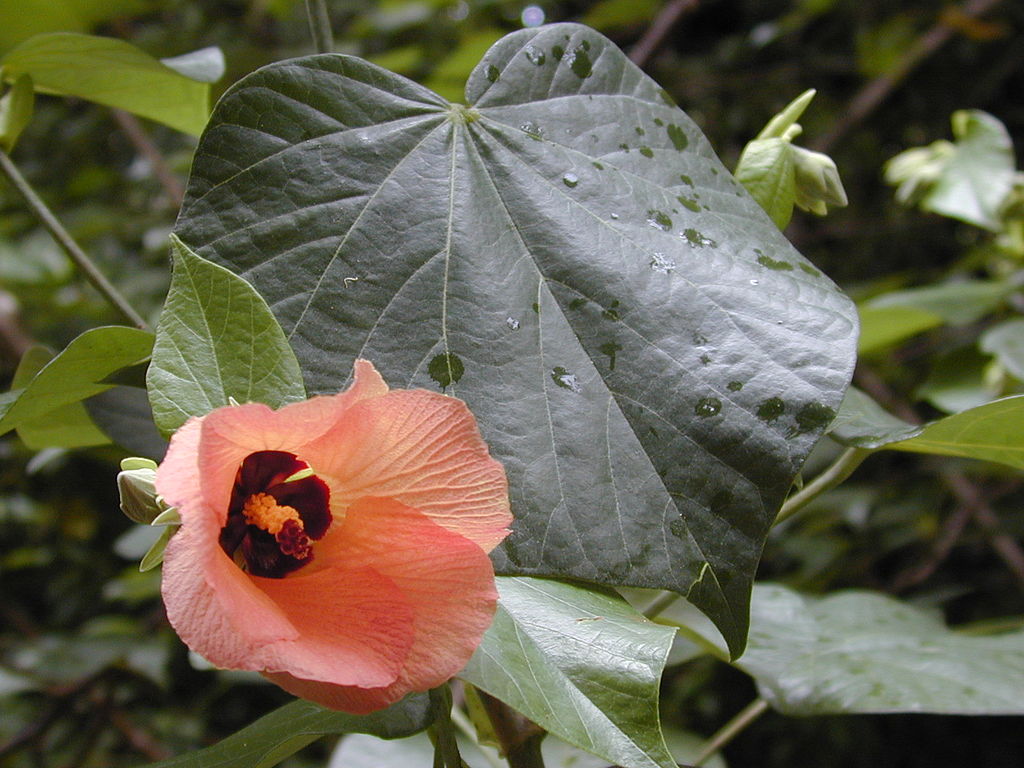
A pantropical strand plant favoring sandy or somewhat muddy coasts, also on limestone rocks, often at the edges of mangrove swamps, inland along estuaries, sometimes on terraces to a few hundred feet above the sea, wild or planted. The wood is light, fairly tough, pale; when freshly cut the heartwood is reddish but soon darkens; easily finished but not very durable. The fibrous bark is a source of cordage all over the Pacific Region. The trees often form a nearly impenetrable thicket with interlacing low horizontal branches. In Guam this is a common plant and has lent its name to several localities (e.g., Pago Bay). It is sometimes cultivated. If trimmed it makes a useful shade tree; it can form a natural "arbor" or roof of leafy twigs. The flowers last only 1 day (as is true of Hibiscus in general) but the tree flowers all year. In Ponape, mucilage from the bark is added to the ceremonial sakau drink prepared from the roots of Piper methysticum (kava). Manengon, beside the stream above Tarzan Falls (3881); Barrigada Hill (4504).
Hibiscus tiliaceus is a wide-ranging species found in both the Old and New World tropics.It is native throughout Polynesia, and in Tonga is common on beaches, in disturbed places, secondary forest, and on the margins of estuaries and swamps. The plant is a medium-sized tree up to 15 m in height, erect with a broad crown or forming dense thickets with its low, spreading branches. The simple, alternately arranged leaves have a heart-shaped blade mostly 8‒20 cm long. The flowers have a corolla of five petals 5‒8 cm long, lemon yellow with purple at the base, and with the stamens united into a tube. The fruit is a subglobose capsule mostly 15‒25 mm wide, containing ca. 15 seeds that are released when the capsule splits open.
Copyright ©2018. This sandbox portal development is powered by Symbiota software. Usage Policy.


